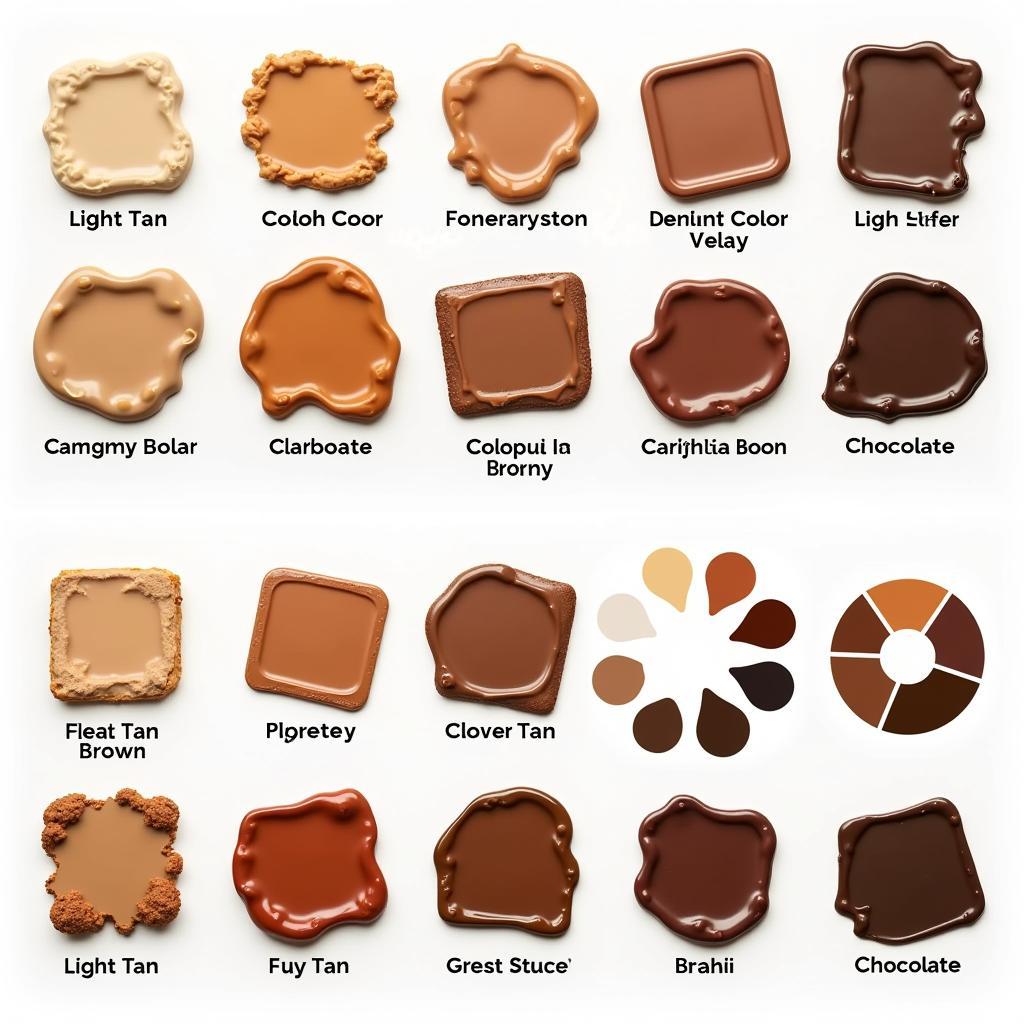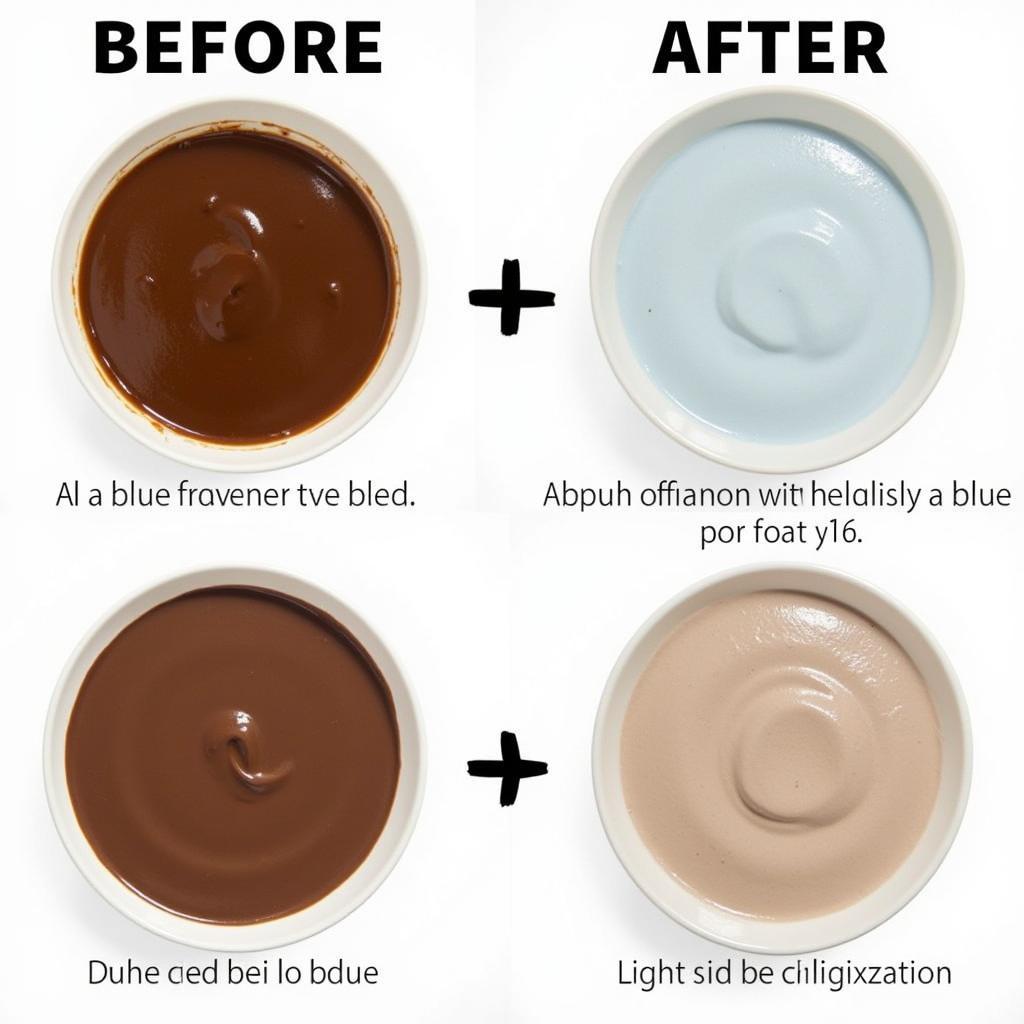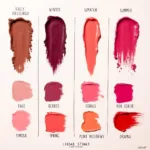Creating the perfect shade of brown for your culinary creations can sometimes feel like a daunting task. Whether you’re aiming for a rich chocolatey hue or a subtle, earthy tone, understanding what colors make brown food coloring is essential for achieving consistent and desirable results. Knowing how to mix primary colors effectively will open a world of possibilities for your baking and decorating endeavors. how to make a grey color might seem unrelated, but understanding color combinations is key in both situations.
Unlocking the Secrets of Brown Food Coloring
Brown, while seemingly simple, is actually a complex color achieved through the careful combination of primary colors. While you can buy pre-made brown food coloring, mixing your own allows for greater control over the final shade. The foundation of brown lies in the clever interplay of red, blue, and yellow. Understanding the ratios and nuances of these colors is crucial for mastering the art of brown food coloring. Are you ready to dive deeper into this fascinating world of color?
Mastering the Primary Color Trio for Brown Food Coloring
The key to creating brown food coloring lies in understanding the relationship between red, blue, and yellow. Start with red and blue to create purple. Then, gradually introduce yellow to this purple base. The amount of yellow you add will determine the final shade of brown. Less yellow will result in a deeper, richer brown, while more yellow will yield a lighter, more muted tone.
Remember, practice makes perfect. Experiment with different ratios to achieve the exact shade of brown you desire. What colors match maroon, you might ask? Understanding the underlying tones of colors like maroon can enhance your ability to fine-tune your browns, allowing you to create more complex and nuanced shades.
Beyond the Basics: Achieving Specific Shades of Brown
Once you’ve mastered the basics, you can experiment with adding other colors to create more complex shades of brown. A touch of green can create a more earthy, olive-brown, while a hint of orange can yield a warmer, more rustic tone. Don’t be afraid to get creative and explore the endless possibilities of color mixing!
 Creating Specific Brown Shades with Food Coloring
Creating Specific Brown Shades with Food Coloring
Fine-Tuning Your Brown Food Coloring
Achieving the perfect shade of brown often involves a bit of fine-tuning. If your brown is too red, add a tiny amount of blue. If it’s too yellow, a touch more blue or red will help balance it out.
“The beauty of mixing your own brown food coloring is the control it gives you,” says renowned pastry chef, Amelia Dubois. “You can create custom shades to perfectly match your vision.”
what colors make golden yellow can provide further insights into manipulating color to achieve specific results.
Troubleshooting Common Brown Food Coloring Challenges
Sometimes, despite your best efforts, the brown you create might not be exactly what you envisioned. If your brown appears too dull, try adding a small amount of black food coloring to deepen the shade. Conversely, if it’s too dark, a touch of white can lighten it up.
“Don’t be discouraged if your first attempt isn’t perfect,” advises color expert, Julian Vance. “Color mixing is a skill that develops with practice. The more you experiment, the better you’ll become at achieving the precise shade you desire.” what colors do you mix to get blue might help understand primary colors better.
 Troubleshooting Brown Food Coloring Issues
Troubleshooting Brown Food Coloring Issues
Conclusion: Mastering the Art of Brown Food Coloring
Creating brown food coloring is an art that combines scientific principles with creative experimentation. By understanding the interplay of red, blue, and yellow, and by practicing different mixing techniques, you can achieve a wide range of brown hues, from light and airy to deep and rich. So, embrace the world of color and let your culinary creations shine with perfectly customized shades of brown. how to make maroon color icing can help you apply these principles to specific applications.
FAQ
-
What are the basic colors needed to make brown food coloring? Red, blue, and yellow.
-
Can I use gel food coloring to make brown? Yes, gel food coloring works well for making brown.
-
How do I make a darker shade of brown? Add more blue or a touch of black.
-
My brown is too red, what should I do? Add a small amount of blue to balance the color.
-
What if my brown is too light? Gradually add more red and blue until you achieve the desired shade.
-
Can I make brown food coloring without yellow? No, yellow is essential for achieving the brown hue.
-
How can I make an earthy brown? Add a small amount of green to your brown mixture.
Need help with your color project? Contact us at Phone: 0373298888, Email: [email protected] or visit us at 86 Cau Giay, Hanoi. Our customer service team is available 24/7.
